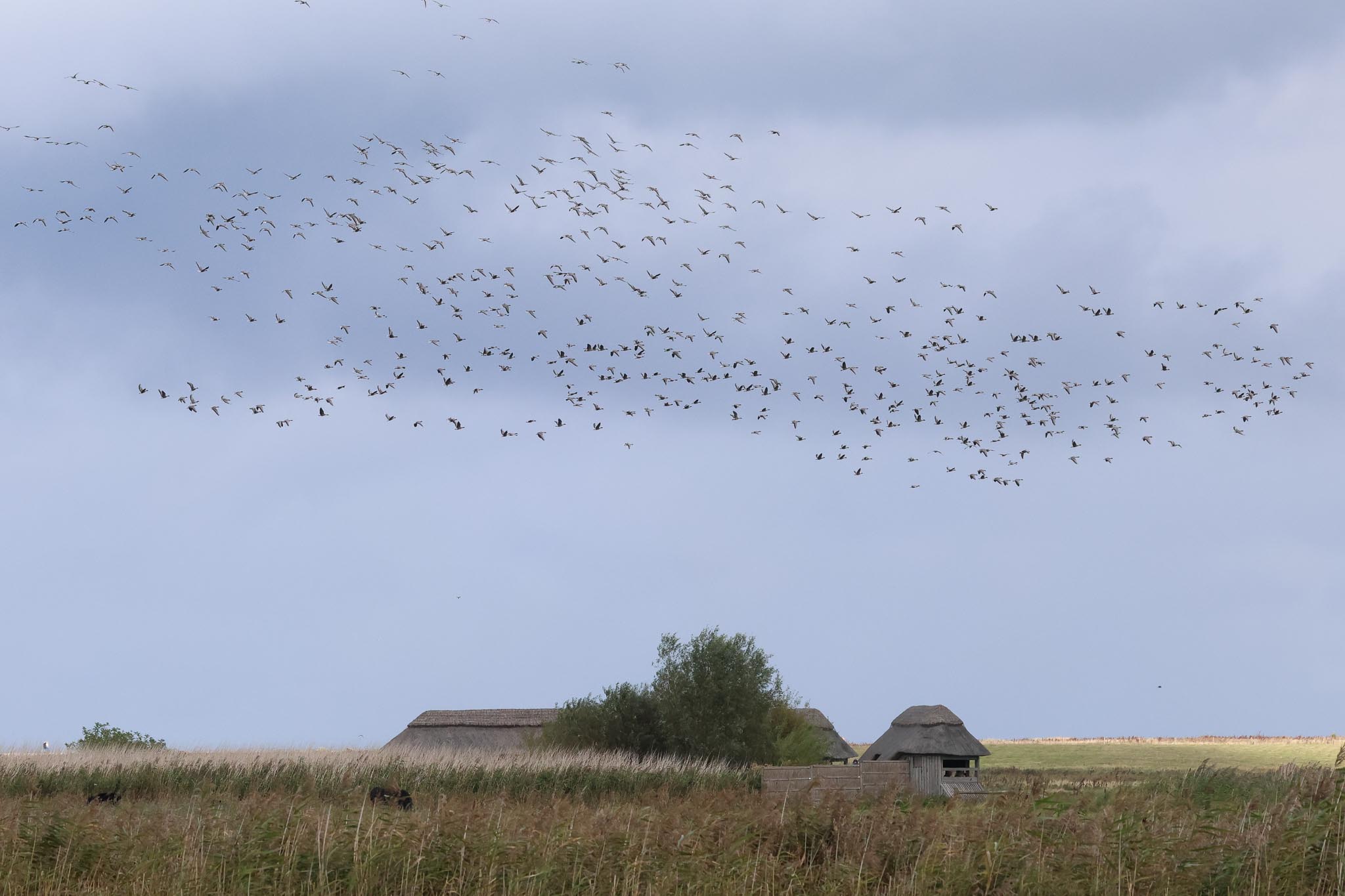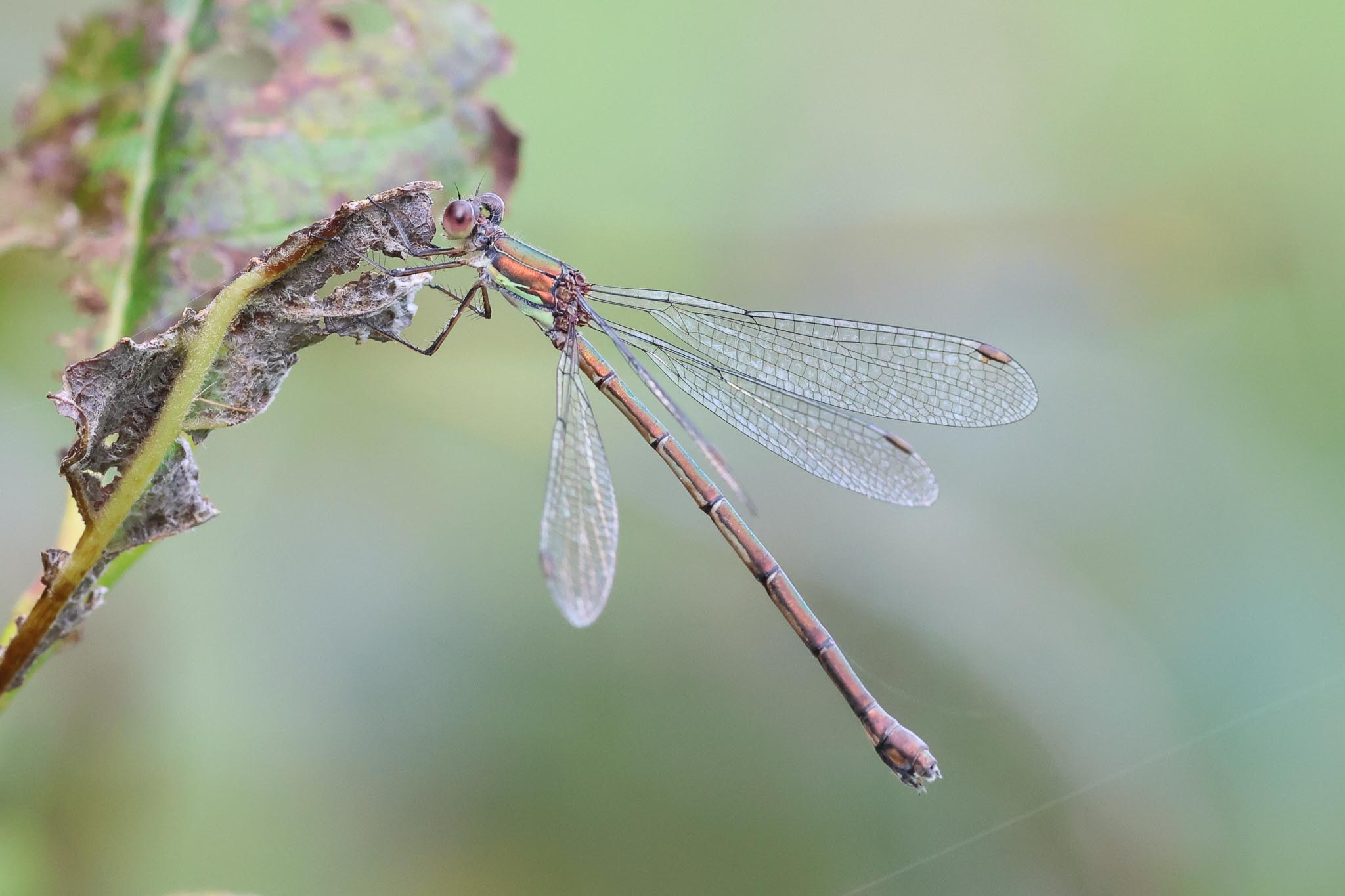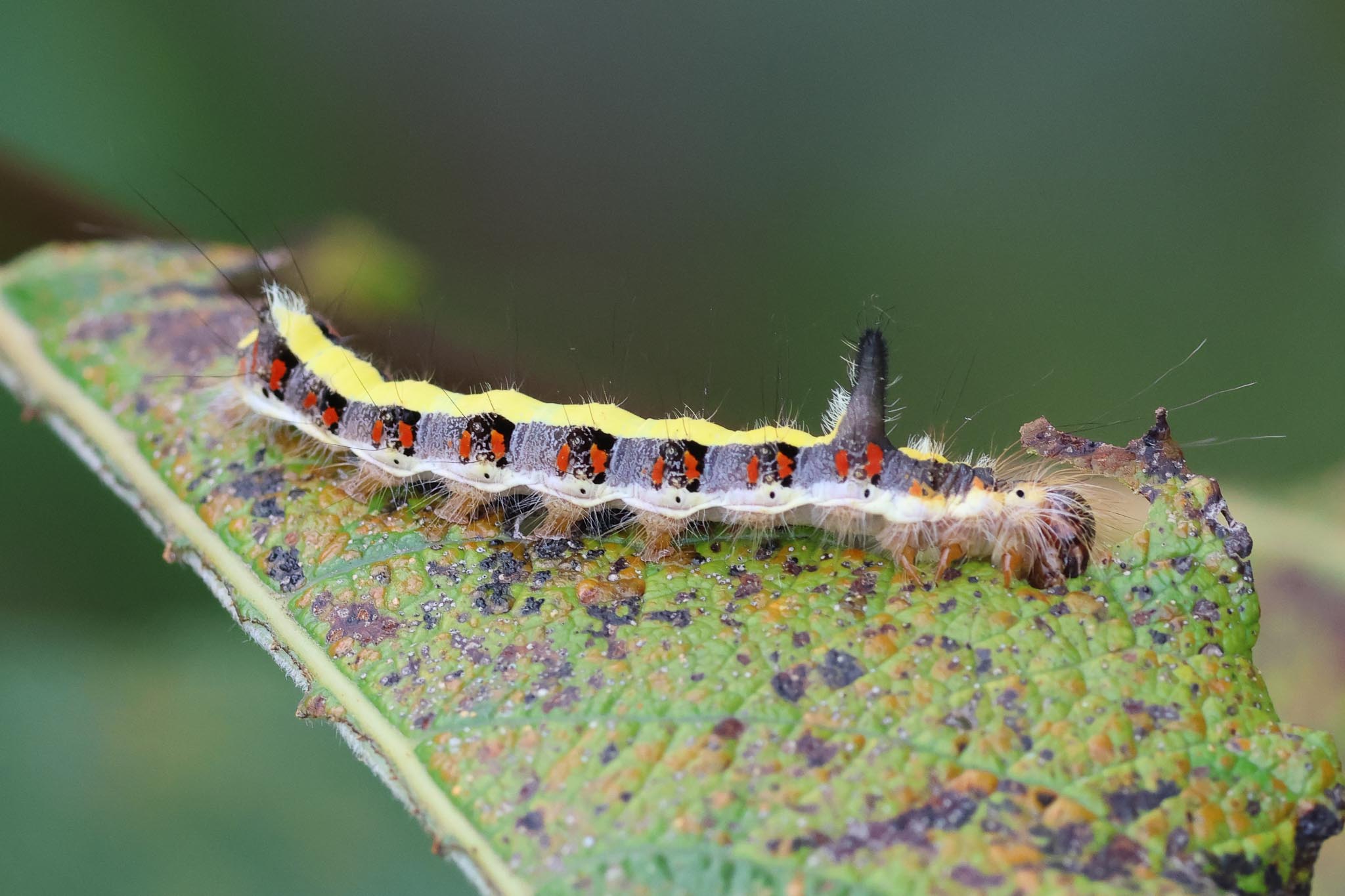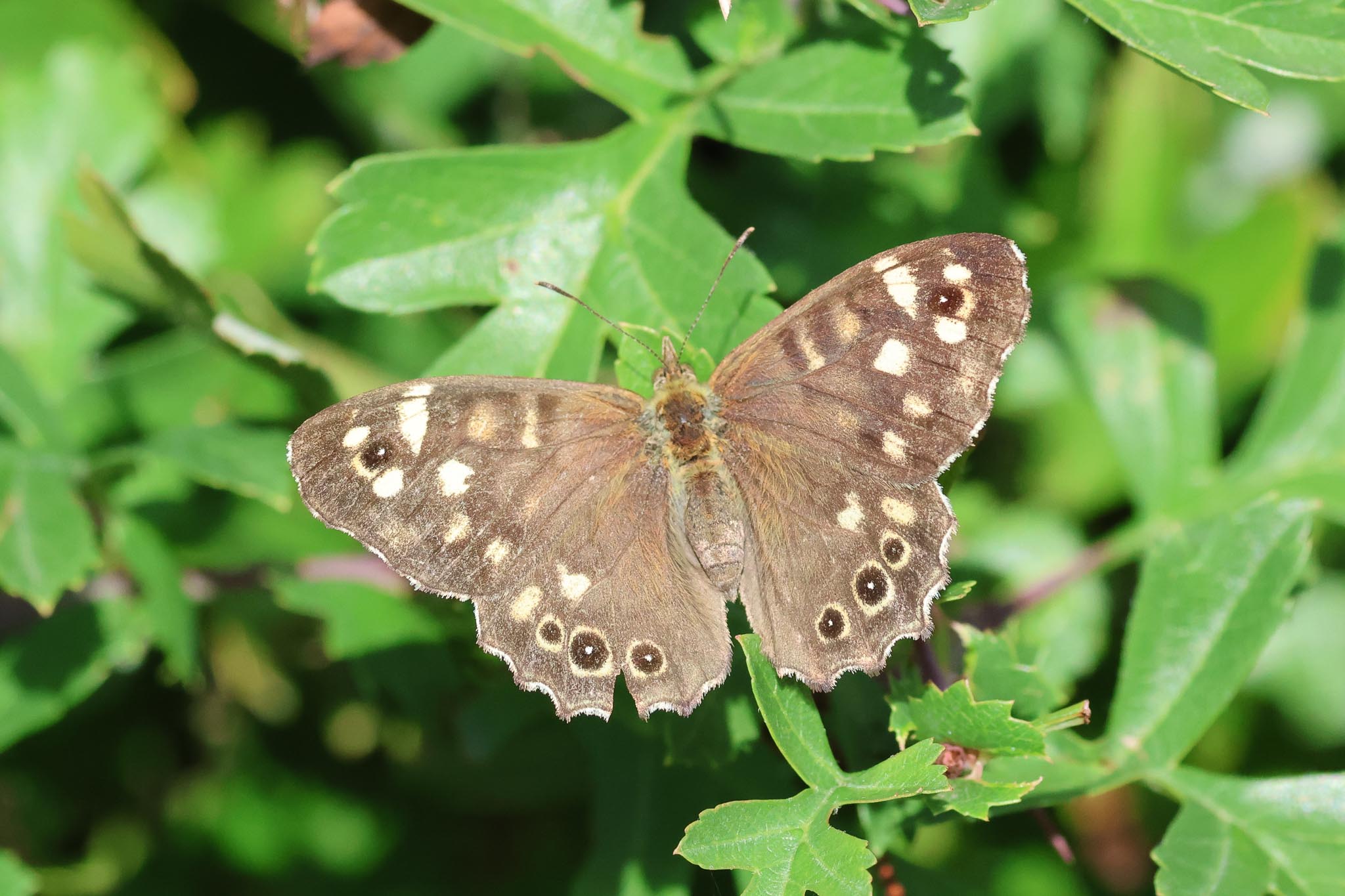A 1-day Autumn Tour today on the North Norfolk coast. There were a few showers about first thing, which was not in the forecast, but we mostly managed to avoid them, then it brightened up late morning and there were some nice sunny spells in the afternoon.
We were heading for Cley first this morning, but as we drove west along the coast road from Salthouse we noticed a white shape in with the cows on the grazing meadow, a Cattle Egret. We stopped in the small parking area at Iron Road and got the scope on it, so we could see its short yellow bill. A Grey Heron flew in and landed with the cows too, and then a second Cattle Egret appeared with the first. A nice start to the day.

We looked down towards the pool but could see it was very full of water after the recent rain, no mud for any waders left, and just a few Teal and a pair of Egyptian Geese. A small group of Gannets flew past over the sea just beyond the shingle ridge and one or two Sandwich Terns were in with the gulls. It was starting to spit with rain, so we decided to carry on to Cley. By the time we had got to Walsey Hills and parked, the rain had stopped again.
A quick look at Snipe’s Marsh produced two Green Sandpipers, which we got in the scope for a closer look. We could hear Pink-footed Geese calling and looked up to see a small flock flying towards us over North Foreland plantation and we watched as they headed off inland to the south-east, possibly heading down to the Broads. A Cetti’s Warbler shouted at us from the reeds. Crossing over to the East Bank, the Little Grebe on Don’s Pool was skulking in the reeds today and hard to see. A Marsh Harrier flew across the bank further up, a female, then carried on over the top end of the Serpentine and Pope’s Marsh, flushing everything.
There were several Canada Geese and Greylags out on the grazing marsh and a single Canada x Greylag hybrid. More Pink-footed Geese flew in over the reserve behind us and started to whiffle down onto the scrapes. Another group of Greylag Geese flew in low over the reeds towards us, their industrial honking in farmyard fashion, very different from the yelping calls of the Pinkfeet.
There were lots of ducks out on the grazing marsh and Serpentine too. The drake Mallards are already emerging from their dull eclipse plumage and back into their smart colourful breeding plumage, whereas the Wigeon, Teal and Shoveler are all still rather brown. A couple of Pintail were feeding in one of the ditches towards the back.
We caught a glimpse of some movement in the top of the reeds out in the reedbed and stopped to look. A female Bearded Tit climbed up into view, which we managed to get in the scope before she disappeared back down. The male we only glimpsed and we heard more Bearded Tits calling nearby, one of which zipped over the reeds briefly, but then they went quiet. Further up, there were several Reed Buntings perched more obligingly in the reeds the other side of the path.
The water level on the Serpentine is very high now too and we couldn’t see any waders on here. Two Common Snipe flew over calling. So we continued on, stopping to look at a more accommodating Little Grebe which was in the middle of the blanket weed in the main drain. A Stonechat was hovering over the bank beyond.
There were more waders on Arnold’s Marsh – a nice selection including three juvenile Bar-tailed Godwits on the saltmarsh at the back, singles of Knot and Grey Plover, a Greenshank feeding with the Redshanks, a couple of Curlew and three Dunlin. We were just enjoying all the waders when the sound of gunfire started to ring out from south of the road – the Pheasant shooting season has started! The ducks on the grazing marsh went up first, and everything else followed. We watched as most of the waders flew off west, so we decided to head on to have a look at the sea.

There were a few Gannets offshore, with one or two dark juveniles plunge-diving in front of us, and as we stood and scanned a trickle drifted past. We could see a couple of feeding frenzies of gulls and Sandwich Terns out over the sea off to the west, and the Gannets seemed to be joining in with them. We had already seen one distant Manx Shearwater flying east, but when we looked back at the closer feeding frenzy we noticed another Manx Shearwater in with them. It was flying round in circles then landing on the sea repeatedly, presumably feeding, until suddenly several of the gulls decided to chase after it. Presumably it had caught something they wanted, as they caused it to splash down on the water several times before we lost sight of it.
There are still a lot of Razorbills offshore, so we got a small party in the scope as they bobbed on the waves preening. A single Guillemot drifted east closer in. There were a few Red-throated Divers moving east in the distance and then a smart adult still largely in breeding plumage appeared in front of the Razorbills on the sea. It was diving continually but we managed to follow it, and it came closer inshore away to our right where it stayed on the surface a little longer so we could all see it in the scope.
There were a few ducks and waders moving offshore today, always great to watch migration in action. We saw a couple of flocks of Wigeon and Teal and a single Common Scoter passing. A flock of Knot and a couple of small groups of Dunlin flew past too and we turned around at one point to see a Bar-tailed Godwit coming in over the shingle behind us. All winter visitors here, just arriving from their northern breeding grounds.

Eventually we had to tear ourselves away and head back. Another small flock of Dunlin had dropped in on Arnold’s Marsh while we were out at the beach, but we couldn’t see anything different in with them. Two Black-tailed Godwits were on the Serpentine now and we stopped to look at a group of Linnets which dropped down for a drink on the edge of the water. It had brightened up now and it was starting to warm up nicely, so we had to shed our coats now back at the minibus.
After a quick stop at the Visitor Centre to use the facilities, we headed out for a quick look at Pat’s Pool from Bishop Hide before lunch. When we got to the Skirts path, we heard Pink-footed Geese calling again – a bit of a recurring theme today, the sound of the winter to come here. This time we looked up over the village to see skein after skein flying in from the fields, a rough count suggested around 1,500 Pinkfeet. We watched them fly over to the scrapes and start to whiffle down, some landed, several hundred circled round and headed off west towards Blakeney and a smaller number flew over our heads and off inland. Fantastic to watch! A single Swallow flew over, the only one we saw today – summer departing as winter arrives.

There were several Black-tailed Godwits feeding in front of the hide and a number of Ruff, a larger group feeding in the water at the back and a white-headed male walking around on one of the closer islands. A Common Snipe was dozing in the edge of the reeds on another of the islands and then a second Snipe flew in and landed on the mud where we could get it in the scope and watch it feeding. A juvenile Little Stint landed on the muddy edge of one of the smaller islands over towards the back.
A couple of darker clouds appeared just as we got back to the Visitor Centre but thankfully they passed over and we ate our lunch in the picnic area in the sunshine. A Willow Emerald damselfly was flying around the sallows by the picnic tables and a Grey Dagger moth caterpillar was feeding on the leaves.


After lunch, we headed back out to look at the central hides. There were a couple of smart drake Gadwall on the island in front of Dauke’s Hide – like the Mallard, they are already emerging from eclipse. We got one in the scope for fill the frame views of the amazing patterns of its plumage. Not just a grey and black duck! There was a flock of Dunlin feeding in the water in the back corner of the scrape but nothing different in with them today.

Some of the Pink-footed Geese which we had seen drop down here earlier were still sleeping on the grass off to the left of the scrape. We got them in the scope – a couple were awake and preening, so we could see their dark head and more delicate bills, dark with a pink band. They were sitting down, so we couldn’t see their pink legs and feet though. Still, nice to see some on the ground after all the ones we had seen flying over earlier.

Turning our attention to Pat’s Pool, a beige-brown Pintail was feeding in the water just beyond the bank. While we were scanning across, we picked up a Yellow Wagtail flying over, so we followed it until it dropped on the edge of one of the islands over the far side. We got it in the scope and although it was tricky to see at first in and out of the reeds, eventually everyone managed to see it. The Little Stint was still on here, but we had a much closer view of it from here.
We couldn’t see anything else which we hadn’t already seen, so we decided to walk back and have a look elsewhere. We headed west along the coast now and stopped at Stiffkey Fen. A Speckled Wood butterfly landed on the hedge ahead of us as we walked down along the permissive path, and six Common Buzzards and two Red Kites were circling up over the wood just inland in the sunshine now.

Down along the path by the river, a Chiffchaff was calling in the trees and flitted in and out of a hawthorn ahead of us. Further along, we stopped to watch a flock of Long-tailed Tits in the sallows and another Chiffchaff was with them, along with a Goldcrest which we could only hear calling.
From up on the seawall, we had a better view of the Spoonbills which were roosting on the Fen still. We counted twenty-one this afternoon, though we were several hours after high tide now. They were mostly doing what Spoonbills like to do best – sleeping! – but a couple were awake and preening, flashing their spoon-shaped bills. There were lots of ducks and geese on the Fen, but not so many waders now – they had mostly moved back out into the harbour, on the falling tide. There were a few Ruff in among all the wildfowl.

We walked round and down to the edge of the harbour. We could see lots of Oystercatchers out on the mud, and smaller numbers of godwits, Grey Plover, Ringed Plover, Turnstone and Knot. Five Brent Geese swimming out in the remaining water in the Pit were our first returning birds of the autumn. We could see all the Grey Seals hauled out on the sand beyond the water. It is a lovely place to while away the afternoon here in the sunshine, but we had one last stop we wanted to make this afternoon so we made our way back.
We drove on west through the village and stopped at the pools just before Wells. The Pectoral Sandpiper which has been here on and off for the last ten days or so was back this morning, so we thought we would have a quick look to see if we could find it now to finish the day. We had just started to scan the east pool, which was where it had been earlier, when two people walking back along the track told us it was not on the back of the pool the other side.
We scanned with the scope from the gate and sure enough, there it was with a juvenile Ruff. It was tricky to see at first, creeping around in the small puddles in the grass, and rather distant, but eventually everyone got to see the Pectoral Sandpiper. A scarce but regular visitor here, possibly more likely in Norfolk from the eastern Siberian population than North America, a nice bird to round off the day.
















